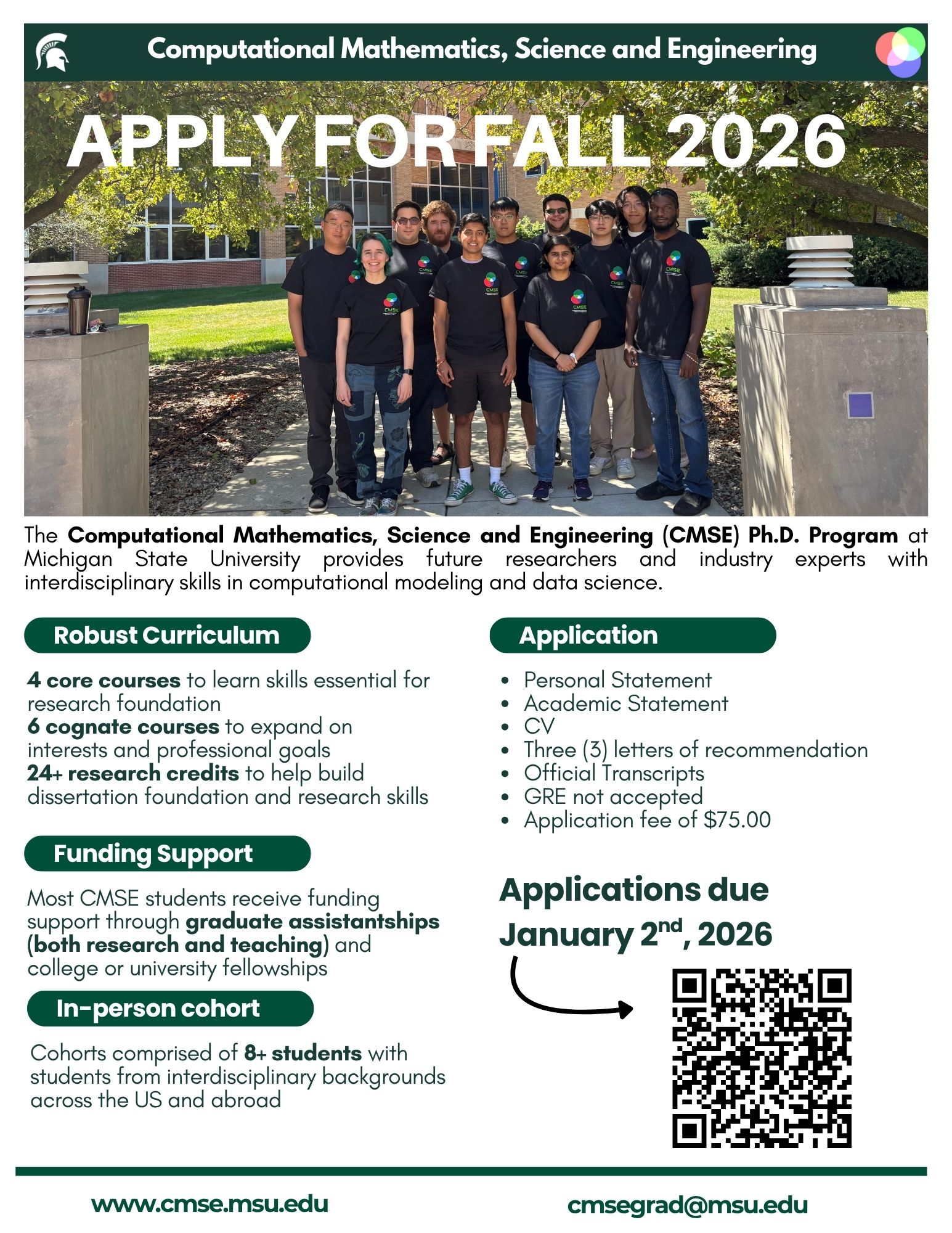Dissertation Defense of CMSE Renming Liu
Department of Computational Mathematics, Science & Engineering
Michigan State University
Dissertation Defense Notice
April 24th, 2024 12:00 pm EST, Room EB3540
Zoom link: https://msu.zoom.us/j/99469726099 (Passcode: cmse)
Network biology powered by graph deep learning: understanding the molecular basis of human genetics
By Renming Liu
Abstract:
Graph learning is revolutionizing the 25-year-old field of network biology by advancing
our ability to gain novel molecular insights into biological functions and complex
diseases using large-scale gene interaction networks. Earlier developed computational
network biology methods are limited by their accuracy, scalability, and biological
context-specificity. This thesis develops several effective and efficient graph learning
methods to further our ability to uncover the multifaceted, complex, and context-specific
roles of human genes.
In living cells, biochemical and biomolecular entities, like protein, RNA, and DNA, intricately interact to exert and regulate biological functions and express molecular traits. This interconnected nature renders the network biology perspective, which models the intermolecular relationships as a graph, quintessential in understanding genes’ biological roles. As a newly developed field rapidly evolving due to its versatility and broad applicability, graph learning aims to build powerful models that unravel complex interaction patterns to accurately classify node labels, opening exciting opportunities to understand human genetics.
This thesis contributes toward a deeper understanding of human genetics using gene interaction networks by developing algorithms, methods, applications, benchmarks, and software. Specifically, through a comprehensive study using various biological networks and gene classification tasks, I first demonstrate that building machine learning models using the network adjacency matrix systematically achieves more accurate gene classifications compared to traditional network propagation-based approaches. Despite the superior performance, the proposed approach does not scale well to large and dense networks, hindering its applicability. To resolve this limitation, I next develop several effective and efficient graph representation learning methods and software by carefully considering the data characteristics of biological networks and the context-specific nature of biological systems. Finally, I consolidate a comprehensive resource for graph deep learning-based gene classification, allowing future developments to be easily built on top of the work done in this thesis.
Committee Members:
Dr. Arjun Krishnan (Chair)
Dr. Christina Chan
Dr. Jiliang Tang
Dr. Yuying Xie



